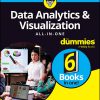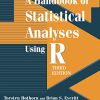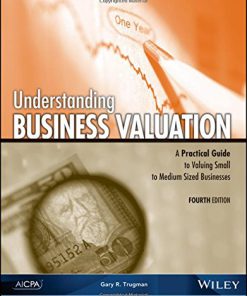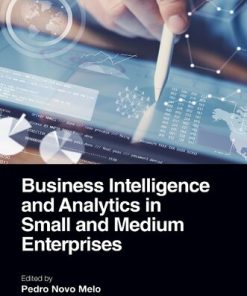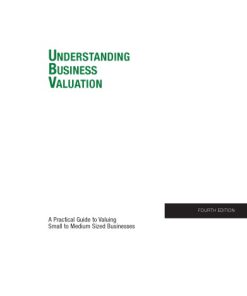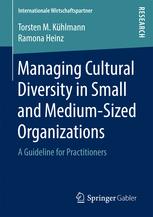Business Intelligence for Small and Medium Sized Enterprises An Agile Roadmap toward Business Sustainability 1st Edition by Lila Rao Graham, Maurice McNaughton, Gunjan Mansingh 0429316372 9780429316371
$50.00 Original price was: $50.00.$25.00Current price is: $25.00.
Business Intelligence for Small and Medium-Sized Enterprises: An Agile Roadmap toward Business Sustainability 1st Edition by Lila Rao-Graham, Maurice L. McNaughton, Gunjan Mansingh – Ebook PDF Instant Download/DeliveryISBN: 0429316372, 9780429316371
Full download Business Intelligence for Small and Medium-Sized Enterprises: An Agile Roadmap toward Business Sustainability 1st Edition after payment.
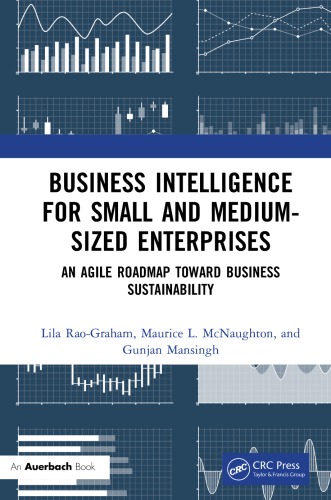
Product details:
ISBN-10 : 0429316372
ISBN-13 : 9780429316371
Author: Lila Rao-Graham, Maurice L. McNaughton, Gunjan Mansingh
Business intelligence (BI) has evolved over several years as organizations have extended their online transaction processing (OLTP) capabilities and applications to support their routine operations. With online analytical processing (OLAP), organizations have also established the capability to extract internal and external data from a variety of sources to specifically obtain intelligence about non-routine and often less-structured arrangements. BI therefore refers to applications and technologies that are used to gather, provide access to, and analyze data and information about the operations of an organization. It has the capability of providing comprehensive insight into the more volatile factors affecting the business and its operations, thereby facilitating enhanced decision-making quality and contributing to the creation of business value. Larger and more sophisticated organizations have long been exploiting these capabilities. Business Intelligence for Small and Medium-Sized Enterprises (SMEs) guides SMEs in replicating this experience to provide an agile roadmap toward business sustainability. The book points out that successful BI implementations have generated significant increases in revenue and cost savings, however, the failure rates are also very high. More importantly, it emphasizes that a full range of BI capabilities is not the exclusive purview of large organizations. It shows how SMEs make extensive use of BI techniques to develop the kind of agility endowing them with the organizational capability to sense and respond to opportunities and threats in an increasingly dynamic business environment. It points to the way to a market environment in which smaller organizations could have a larger role. In particular, the book explains that by establishing the agility to leverage internal and external data and information assets, SMEs can enhance their competitiveness by having a comprehensive understanding of the key to an agile roadmap for business sustainability.
Business Intelligence for Small and Medium-Sized Enterprises: An Agile Roadmap toward Business Sustainability 1st Table of contents:
Part I BI Landscape – Opportunities For SMEs
Chapter 1 Barriers and Strategies for Enterprise ICT Adoption in SMEs
Introduction (Digital Economy – Implications for Business)
SMEs and ICT in Developing Economies
SMEs and ICT Adoption – Barriers & Challenges
BI – Value Opportunities for SMEs
Distribution and Retail
Credit and Micro-Finance Services
Chapter 2 An Agile Integrated Methodology for Strategic Business Intelligence (AIMS-BI)
Introduction
Why the Need for New Methodologies?
The Need for a Strategic, yet Agile Perspective
Know the Current State of your Information Maturity
End User and Key Stakeholder Engagement
Design of AIMS-BI
Description of AIMS-BI
Step 1: Information Maturity Assessment
Step 2: BI Opportunity Discovery
Step 3: BI Portfolio Evaluation
Step 4: Proof of Concept Prototypes
Strategic Business Intelligence Roadmap
Findings from Applying AIMS-BI
Conclusion
Part II Navigating the Agile BI Process
Chapter 3 Information Management (IM) Maturity Assessment: Evaluating Business Capabilities and Gaps
Introduction
Maturity Models in Organizations
Implementing the IM Maturity Model
Applying the AIMS-BI IM Maturity Assessment
Example of the Application of IM Maturity Assessment
Conclusion
Chapter 4 Creating BI Portfolios
Introduction
The Discovery of BI Opportunities
BI Portfolio Evaluation
Example: BI Opportunity Discovery and Portfolio Evaluation
Conclusion
Chapter 5 The Process and Value of Building Proof-of-Concept Prototypes
Introduction
Why Develop PoCs?
BI – The Different Layers of Analytics
Monitoring Layer
What Is Data Visualization?
Data Visualization Process Models (VPM)
Understanding the Business Context
Get Data
Visualization Design Considerations
How Will the User Respond to the Visualization?
How Will the Visualization Be Used?
How Should the Data Be Encoded?
Building Visualizations
Business Insights
Decisions and Actions
Prediction Layer
What Is Data Mining?
IKDDM Process Model for Data Mining
Business Understanding Phase
Data Understanding
Data Preparation
Modeling (Data Mining)
Evaluation
Deployment
Lessons Learned from Applying the Process Models to the Development of the PoCs
Conclusion
Chapter 6 Data Governance and Data Quality Management
Introduction
Data Governance and Data Quality
Data Quality Management Process
Stage 1: Defining Data Standards Quality Metrics
Stage 2: Data Quality Assessment
Stage 3: Data Maintenance/Stewardship
Stage 4: Data Life-Cycle Process Review
Conclusion
Chapter 7 Data Integration: Managing Data Sources for Agility
Introduction
Opportunities through Data Integration
Key Deliverables from Realizing Integration Opportunities
Common Approach to Data Integration
Possible Integration Approaches
Examples of Data Integration Techniques
Physical Integration
Virtual Integration
Physical vs. Virtual Integration
Selecting a Data Integration Approach
Recommendations for SMEs
Conclusion
Part III A Blueprint for Action
Chapter 8 Developing a Roadmap for Strategic Business Intelligence
Introduction
Information Management (IM) Maturity Assessment (Capability Gaps)
Proof of Concept (PoC) Prototypes
Data Quality
Data Integration
Architecture of a Business Intelligence (BI) Roadmap
Performance
People
Process
Platform
Example Roadmap – Portfolio of BI Initiatives
Navigating the BI Roadmap
Conclusion
Chapter 9 Creating Business Value from Data Assets
Introduction
Measuring Value of your Data Assets
Method of Information Value Assessment
Managing the Value of your Data Assets
Benefits Realization Management (BRM)
Conclusion/Recommendations
People also search for Business Intelligence for Small and Medium-Sized Enterprises: An Agile Roadmap toward Business Sustainability 1st:
small business ideas for artificial intelligence
artificial intelligence for small business
business intelligence tools for small companies
best business intelligence software for small businesses
competitive intelligence for small business
Tags: Business Intelligence, Small, Medium Sized Enterprises, Agile Roadmap, Business Sustainability, Lila Rao Graham, Maurice McNaughton, Gunjan Mansingh
You may also like…
Business & Economics
Business & Economics - Personal Finance
Business & Economics - Small Business
Politics & Philosophy
Business & Economics
Jurisprudence & Law - Foreign & International Law
Small and medium-sized enterprises in international economic law First Edition Rensmann
Business & Economics


